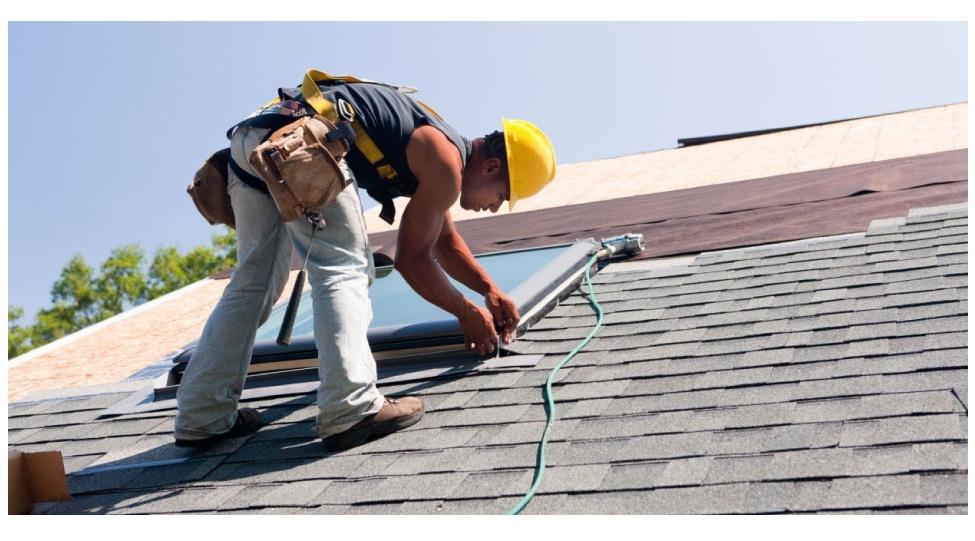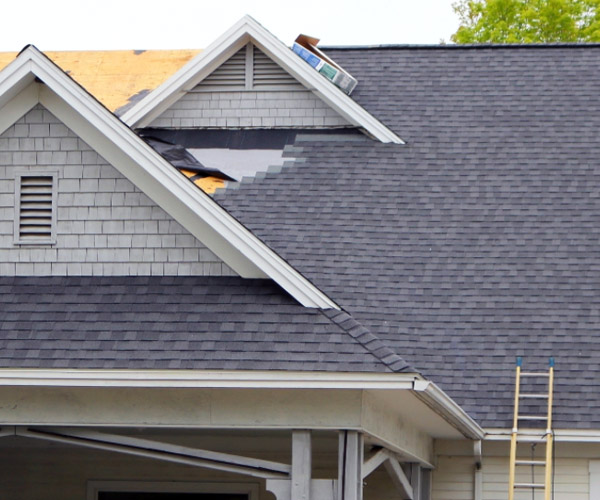Find a licensed Roofer to handle all your commercial roofing needs.
Just How to Examine Different Roof Covering Options for Your Structure Needs
Examining roof covering choices for your structure needs a comprehensive technique that thinks about different variables such as the planned use of the structure, local environment problems, and material qualities - Perrysburg Roofer. It is important to weigh the benefits and drawbacks of different roof types, from asphalt shingles to steel and clay tiles, while also factoring in initial expenses and long-lasting upkeep.
Analyzing Your Building's Requirements
To successfully evaluate roofing options, start by thoroughly evaluating your structure's needs. Start by thinking about the structure's intended usage, as various frameworks may require differing roof requirements. Household roofs usually prioritize appearances and insulation, while commercial buildings might focus on toughness and load-bearing capacity.
Next, assess the local climate conditions that will certainly influence roof performance. Aspects such as temperature fluctuations, rainfall degrees, and wind patterns can influence product selection and style. A roof that masters a warm climate might not execute too in locations susceptible to heavy snowfall or extreme warmth.
In addition, evaluate the structural honesty of your building. Make sure that the existing structure can support the picked roof covering products, especially if considering heavier options. It is also essential to examine any local building regulations or regulations that may determine specific demands for roof systems.

Contrasting Roof Materials
When a comprehensive analysis of your building's demands has actually been completed, the next step entails comparing numerous roof products. Each material provides distinctive advantages and disadvantages, making it important to straighten your selection with your specific needs and situations.
Asphalt roof shingles are commonly recognized for their affordability and ease of setup, making them a preferred choice for residential structures. On the various other hand, metal roof covering, recognized for its toughness and longevity, can stand up to extreme weather however may feature a higher preliminary financial investment.
Clay and concrete floor tiles offer superb thermal insulation and aesthetic charm, particularly for Mediterranean-style architecture, yet they require a more durable structural support due to their weight. Timber drinks deal a natural look and good insulation residential or commercial properties however may demand extra maintenance and are susceptible to fire threats.
Examining Expense and Budget
Evaluating your roof covering choices necessitates a mindful analysis of price and budget plan factors to consider. The general budget plan for a roof job comprises several variables, consisting of product expenses, labor costs, maintenance, and prospective lasting savings. It is crucial to establish a clear spending plan prior to checking out specific roof covering products, as this will certainly guide the decision-making procedure and help you avoid overspending.
Begin by obtaining quotes from numerous service providers to comprehend labor costs in your region. Guarantee that these quotes consist of all necessary services, such as removal of the old roof, installment, and any type of extra functions, like insulation or air flow improvements - Perrysburg Roofer. Next off, assess the expense of various roofing products, considering both first installation expenses and anticipated lifespan

Understanding Energy Performance
Power performance plays a vital function in the selection of roof products and systems, dramatically affecting both power consumption and general convenience within a structure. A well-chosen roofing system can enhance thermal efficiency, reducing the need for home heating and cooling systems, which consequently reduces energy expenses and lessens environmental effect.
When reviewing roof covering choices, think about products that reflect instead of absorb heat. Light-colored or reflective roof products can significantly lower roofing system surface temperatures, resulting in lower power usage throughout warm months. In addition, appropriate insulation and ventilation are vital to optimize the energy effectiveness of the whole roofing system. Insulation protects against heat transfer, while ventilation minimizes warm build-up in the attic space.
An additional essential aspect is the roof's durability and maintenance demands. Durable products that need less constant substitute add to lasting energy savings. The power effectiveness of a roof covering system can also be assessed through its compliance with established sustainability ratings such as Power CELEBRITY or LEED.
Taking Into Consideration Aesthetic Appeal
A roofing's visual appeal considerably affects the total look of a building, complementing its find more information building style and enhancing visual allure. Roofer. When examining roofing options, it is important to consider exactly how the picked product, shade, and design will balance with the existing framework and neighborhood. A properly designed roof covering can elevate also the easiest of structures, changing them right into aesthetic centerpieces
Different roofing materials offer numerous aesthetic top qualities. Typical tiles may stimulate a classic beauty, while steel roofing can pass on a modern-day, smooth appearance. Furthermore, the shade of the roofing product plays a crucial duty; lighter tones can make a structure show up even more sizable, while darker tones might produce a cozier ambiance.
Additionally, architectural components, such as dormers and eaves, can boost the roof's aesthetic impact. It is advisable to learn the facts here now seek advice from professional designers or engineers to make sure the chosen roof covering choice aligns with the overall design intent. Inevitably, a roof ought to not only give useful advantages but additionally why not try this out add positively to the structure's aesthetic, mirroring the owner's taste and the character of the surrounding setting.
Conclusion
